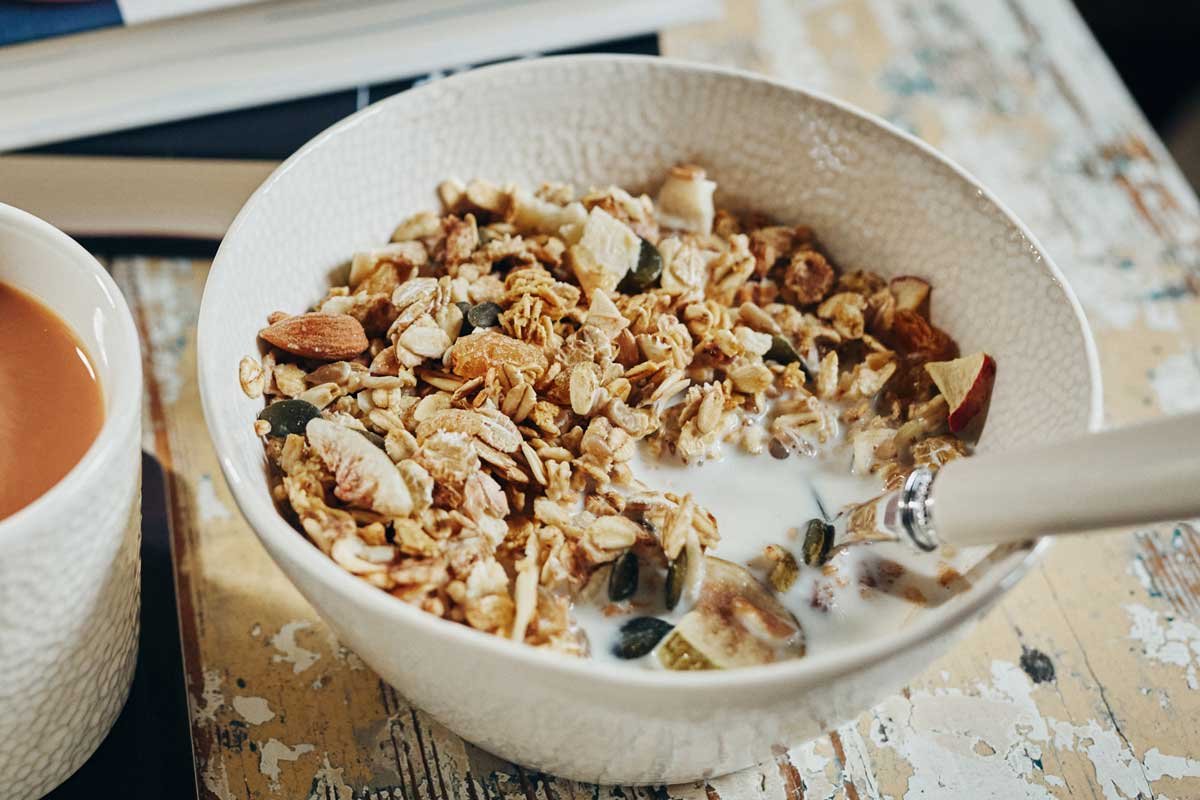Perfect Purification Plants for Your Home | Lizi’s
As if you needed any more reasons to purchase house plants! Our green accessories provide our homes with a splash of vibrancy and colour, transforming a room immediately to instil a sense of calm.
Not only that, but it turns out house plants – these wonderful green gifts sent from nature – are literally giving us, and our homes, a breath of fresh air.
So, in a bid to provide you with the information to create a lifestyle that makes you feel a whole lot better, we turn to the air in our home, and the plants that purify it for us.
But how do plants make this happen?
During the photosynthesis process, carbon dioxide (that we breath out) is converted into oxygen (that we breathe in). This alone means that by just sitting pretty in our kitchen, bathrooms and living rooms, we are presented with a consistent supply of fresh oxygen.
Further to this, there are plants that also remove toxins from the air we breathe during photosynthesis. The plants absorb toxins in the air, moving them down into the root system, where they’re broken down.
The following toxins – or Volatile Organic Compounds to use their scientific name – are commonly present in households. They’re found in everyday items like cleaning products, detergent products, fabric, decorating products, and even items such as napkins, paper towels and bags.
We’ve outlined some of the symptoms that may be experienced by people when exposed to these chemicals:
Benzene
Exposure to benzene can cause irritation to eyes, headaches and drowsiness.
Formaldehyde
Formaldehyde causes irritation to the nose, mouth and throat. In severe cases, exposure causes the lungs and larynx to swell.
Trichloroethylene
Known to cause headaches, dizziness, nausea and even vomiting, in severe cases long-term exposure to this toxin can lead to drowsiness and coma.
Ammonia
Perhaps one of the most well-known toxins, exposure to ammonia can lead to symptoms such as eye irritation, coughing and a sore throat.
Xylene
Symptoms associated with Xylene include irritation to the mouth and throat, headaches and dizziness, while severe cases have been known to cause organ damage.
Onto the plants…
Obviously, it’s extremely important that we love, cherish and nurture our houseplants to see them grow and flourish. We know life can be demanding; sometimes watering your houseplants is the task that falls to the bottom of your to-do list.
The great news is that most of these plants are low maintenance, meaning it takes a LOT of neglect before they finally give up on you!
(It’s also important to note that some of these plants can be toxic to animals. Please be sure to check each plant before bringing them into a home with pets!)
Snake Plant
The snake plant also goes under another, rather precarious, name – Mother-in-Law’s Tongue. It can grow as big as two meters, and snake plants are really low maintenance too! Place them in a bright room, but out of direct sunlight, and leave them without water – they’ll still thrive! The only activity that causes them to die is being over watered.
Known to filter out: Benzene, Xylene, Trichloroethylene, Formaldehyde
Spider Plant
Perfect for those who might not possess the best track record when it comes to keeping plants healthy. Spider plants can thrive in just about any indoor temperature and love to be in indirect sunlight.
Known to filter out: Xylene, Formaldehyde
Aloe Vera
You’ve undoubtedly heard of the anti-inflammatory and remedial properties aloe vera offers; aloe vera stems can be applied to wounds and sunburn to aid the healing process. And the best part is you can successfully grow and care for this stunning plant in your home.
Aloe vera is great for purifying air, too, and alerts us when the volume of toxic chemicals in the air is too high by growing brown spots on their leaves.
Known to filter out: Formaldehyde, Benzene
English Ivy
Hailed as one of the best air purifying houseplants, it’s time to move ivy indoors.
English ivy’s flowing tendrils give an air of elegance to any room. It likes to feel crowded, thriving in small spaces or wedged in to a pot with other plants.
Known to filter out: Xylene, Trichloroethylene, Formaldehyde. Benzene
Chinese Evergreen
Chinese Evergreen is easy to look after and is found in many different varieties. To keep it in tip-top condition, it does need fertilising twice a year.
Chinese Evergreen likes rooms with medium to low light and humid temperatures. They’re perfect for bathrooms. It thrives in well-drained soil, so pots with good drainage are a must.
Known to filter out: Benzene, Formaldehyde
Weeping Fig
The Weeping Fig is native to China and can grow up to 10 feet tall – so it can become a real statement plat.
A true sun worshipper, this plant thrives in direct sunlight and needs to be watered just once a week.
Known to filter out: Xylene, Formaldehyde
Bamboo Palm
Another high-impact, statement plant – bamboo palms can grow up to 12 feet high, making them toxin filtering machines.
Bamboo palms are a wonderful addition to any room and can add a bit of drama with their strong presence! They love to be in direct sunlight, so avoid keeping them in low light rooms.
Known to filter out: Xylene, Formaldehyde
Devil’s Ivy
Also known as ‘pothos’ or ‘golden pothos’, devil’s ivy is an indoor plant that is known for its toxin-fighting abilities.
It grows well in a watery environment, so it’s perfect for pots that don’t offer draining. Choose devil’s ivy for your hanging baskets – these are also perfect for emphasising its beautiful cascading stems.
Known to filter out: Xylene, Formaldehyde, Benzene
So, over to you! Which plants will suit your home and space best? We’d love to see your choices and how you bring the outdoors in, so don’t forget to tag us in your images on social media! Use the hastags #AWholeLotBetter and #LizisLifestyle.


